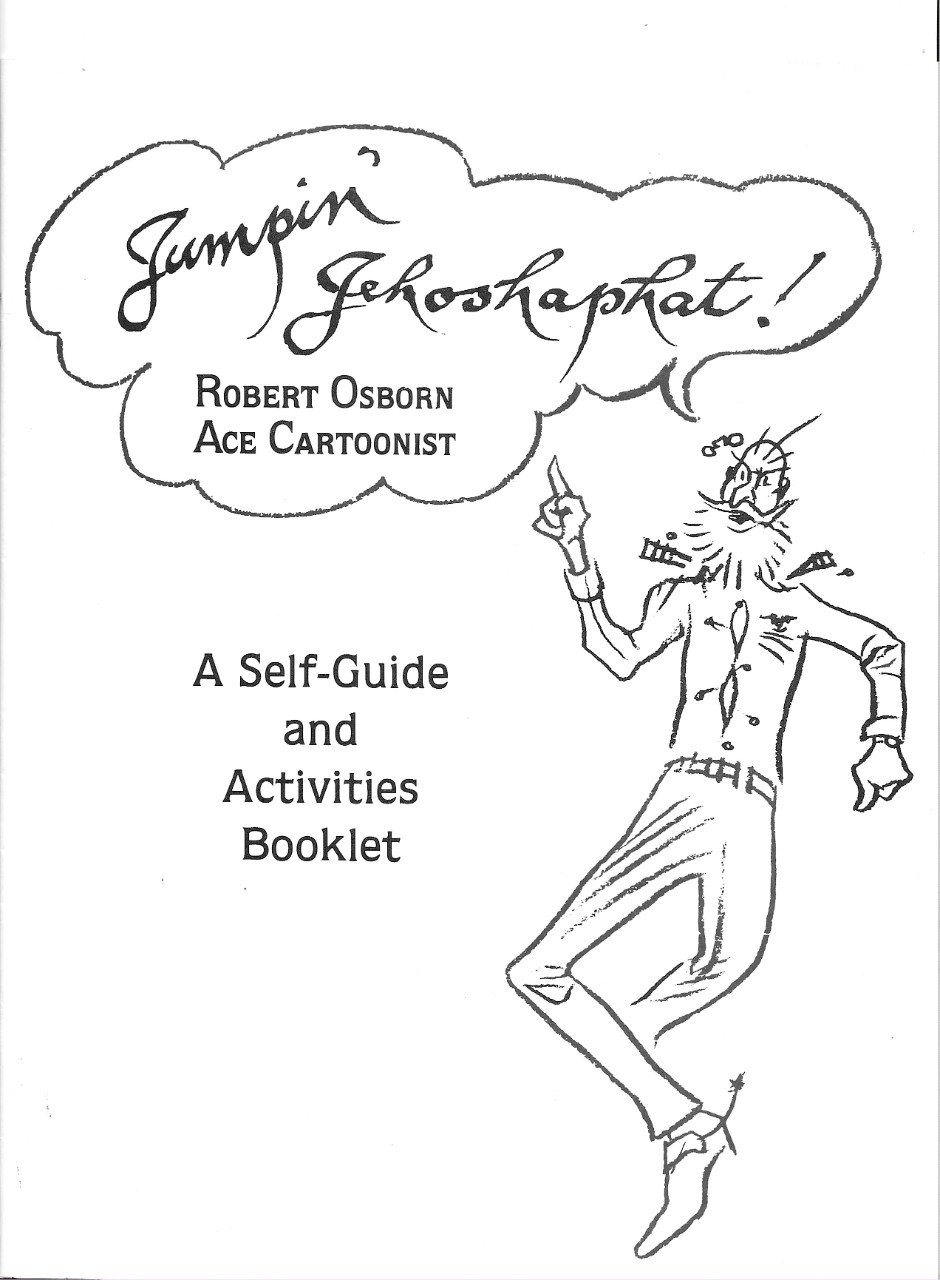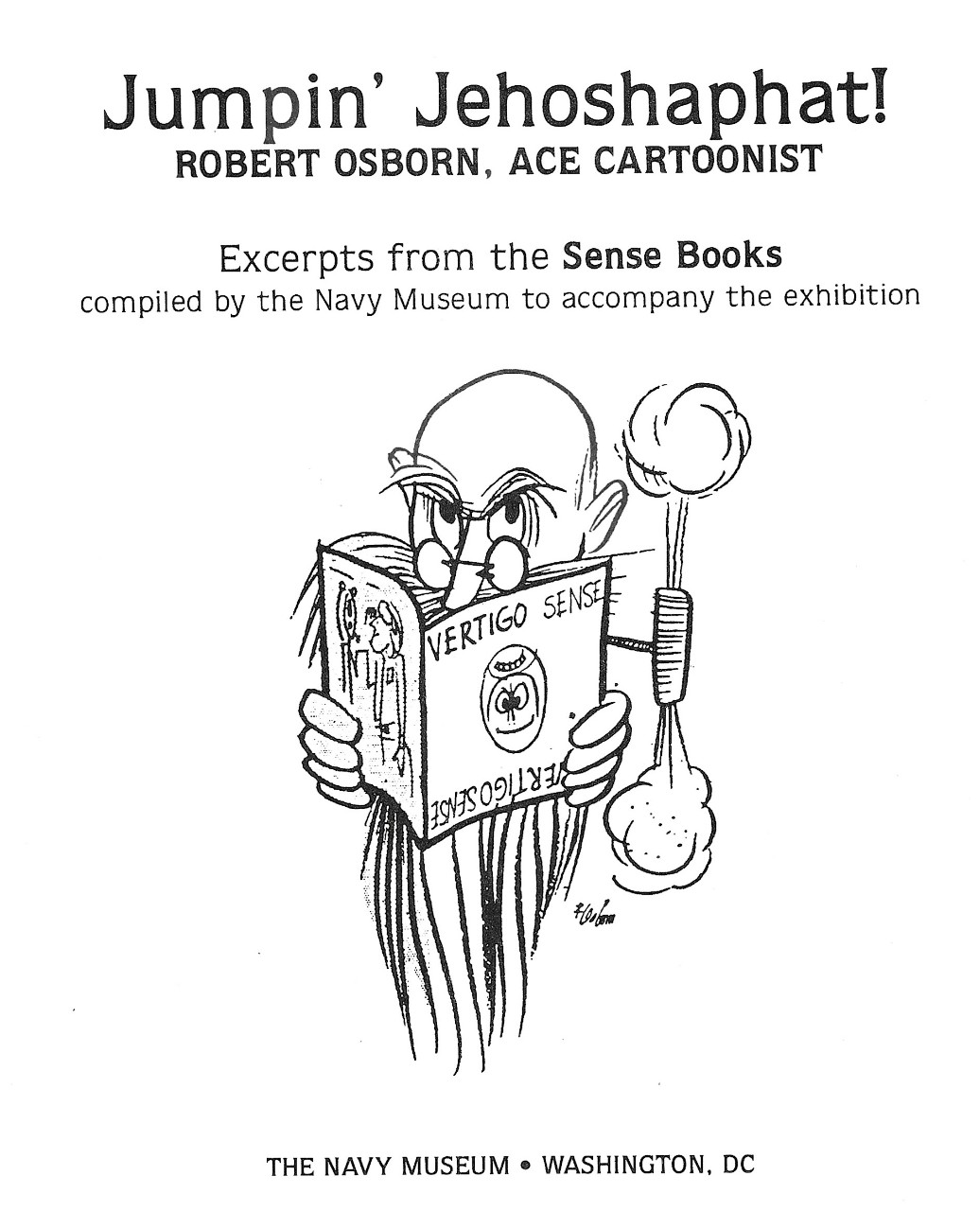Robert Osborn Art Exhibit
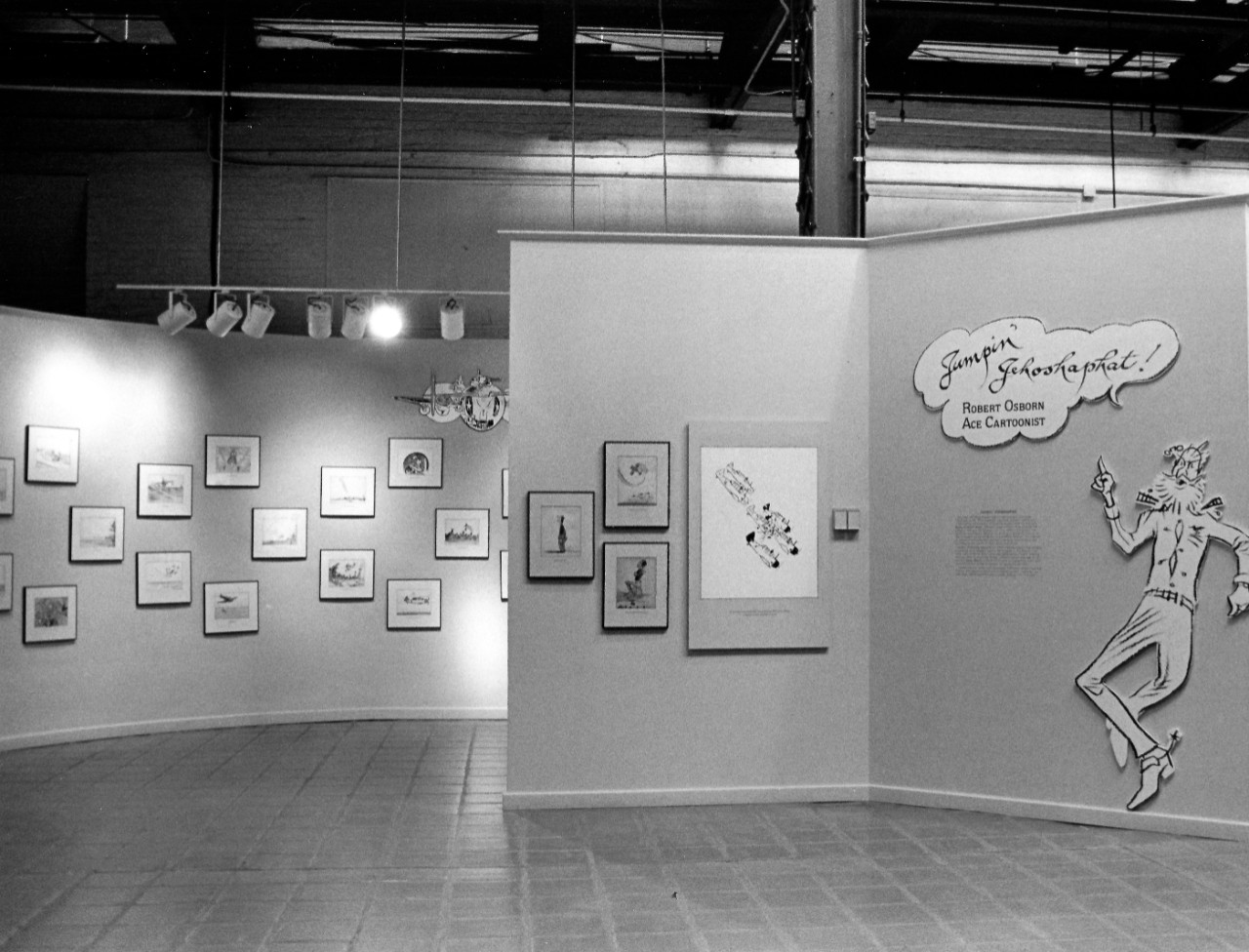
NMUSN-749: Robert Osborn Art Exhibit, 1991. Exhibit focused on the artist’s career with images of Dilbert and Grampaw Pettibone amongst others. National Museum of the U.S. Navy Photograph Collection.
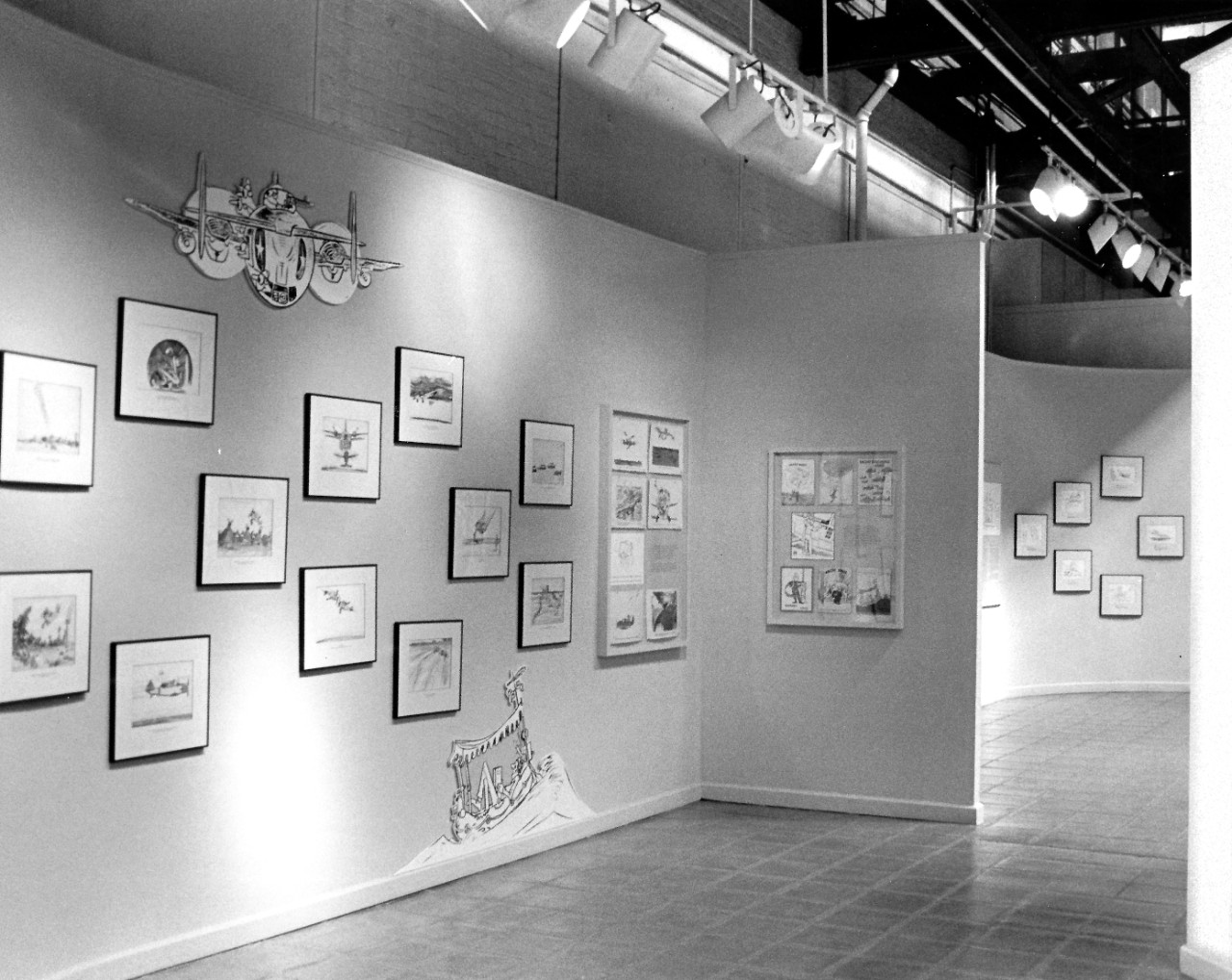
NMUSN-750: Robert Osborn Art Exhibit, 1991. Exhibit focused on the artist’s career with images of Dilbert and Grampaw Pettibone amongst others. National Museum of the U.S. Navy Photograph Collection.
In November 1991, the Navy Museum (now National Museum of the U.S. Navy), held an exhibit on the artwork and history of artist Robert Osborn who created cartoons, such as Dilbert, Spoiler the Mechanic, and Grandpaw Pettibone, to address safety and with training of naval aviators. In the exhibit, there were approximately 69 drawings of these characters along with other works such as the Sense Books. Osborn retired from drawing cartoons for Naval Aviation News in 1994. The Education Department also had a series of interactive pamphlets which focused on the various naval aviation characters Osborn created.
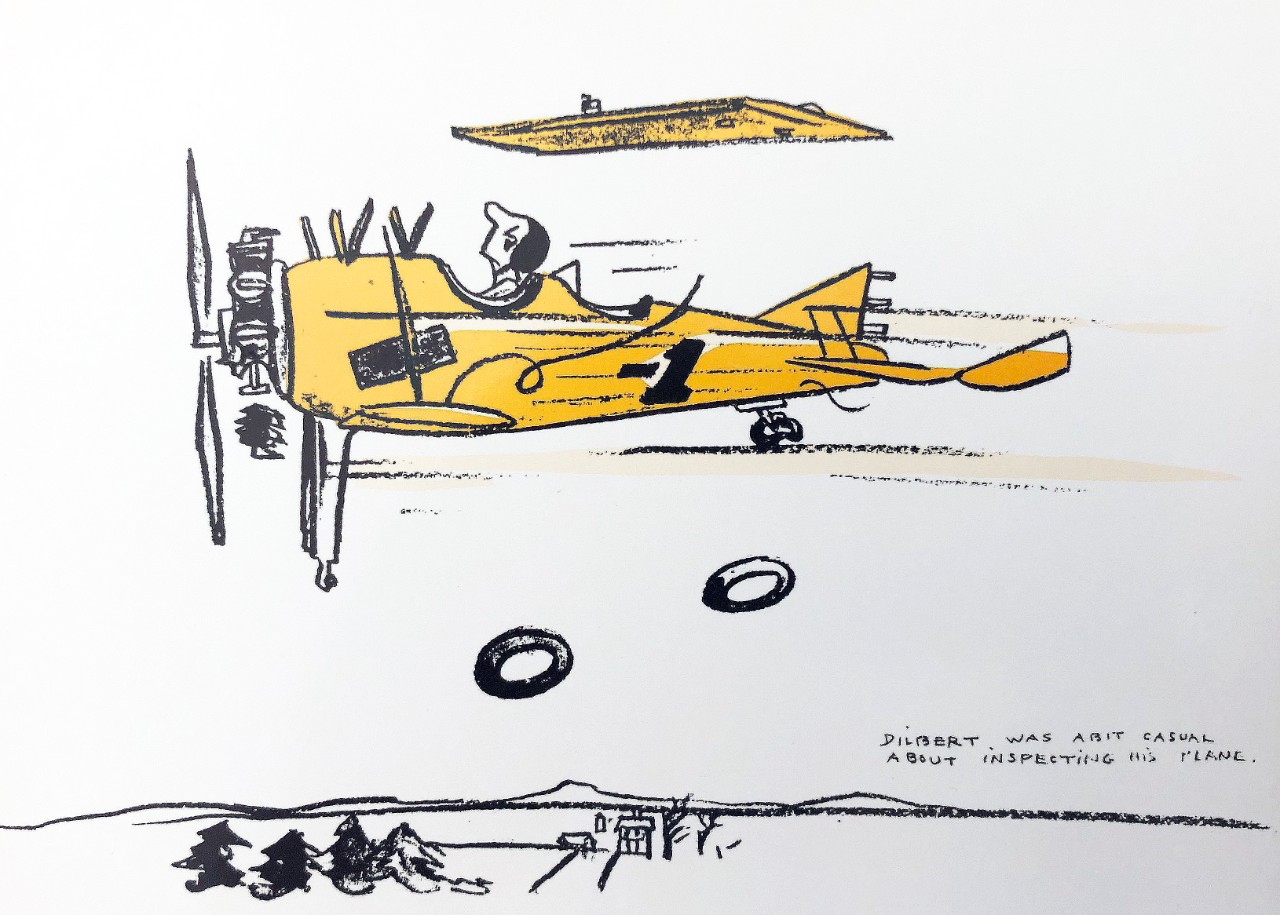
Robert Osborn Art Exhibit Front Cover
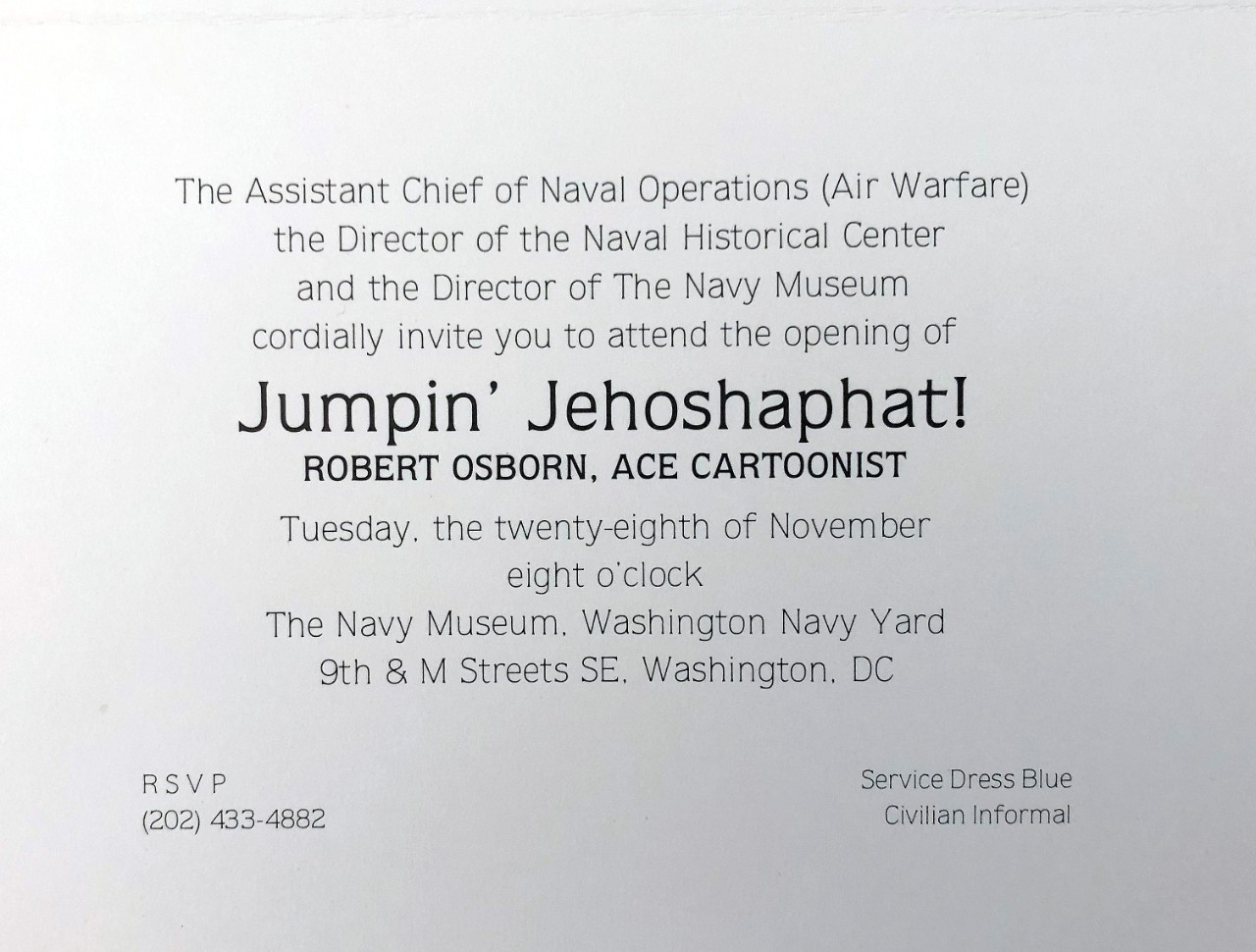
Robert Osborn Art Exhibit Announcement
Robert Osborn Biography
Robert Osborn was born in Oshkosh, Wisconsin, on October 26, 1904. Attending the University of Wisconsin and studying fine art at Yale University, he traveled to Europe to further his painting career. He took his entire savings of $1,500 and resided in Romeand Paris. Going back and forth to Europe for several years, he finally returned to the United States in 1938. While studying painting in Europe, Osborn also experienced the rise of Hitler in Germany and Mussolini in Austria. Realizing the Nazi threat, even before America entered World War II, he tried to join the Canadian Royal Air Force but was turned down because of his persistent ulcer.
The day after the Pearl Harbor attack by the Japanese on December 7, 1941, Osborn was ready to enlist in the U.S. Navy, where he later attained the rank of Lieutenant Commander. He was eventually sent to Washington, D.C. to prepare Naval Aviation training manuals. While in D.C., he worked under Commander Edward Steichen. While doing the manuals, the cartoon characters Dilbert and Grampaw Pettibone began their successful careers. As the war continued, Osborn went to see on board USS Essex (CV-9) and witnessed the battles of Saipan and Iwo Jima. His ulcer ended his activeduty career in 1945, but he continued to draw Grampaw Pettibone for Naval Aviation News until he retired in 1994.
Osborn’s career as an artist and satirist was eminently successful. His works appeared in Life, Look, Fortune, The New Republic, Harper’s, Horizon, The New York Times, Esquire, and many other top publications. Following his active-duty Navy career after the war, he wrote the book, War is No Damn Good! condemning nuclear use in war. He is noted for other cartoons protesting their use. In 1977, his dedicated service to Naval Aviation was recognized when he was designated No.14 in the elite group of Honorary Naval Aviators. He cherished this honor. Osborn died on December 20, 1994, in Salisbury, Connecticut.
Dilbert:
While creating the Sense Books, which were a pamphlet series with text and cartoons covering all manner of flying hazards, Robert Osborn created the cartoon character Dilbert, a dumb but cheerful cadet pilot. His mistakes were a constant menace to himself and fellow naval cadets and aviators. To prepare for these drawings, he traveled to naval air stations or to the Pacific to study problems and was deployed on
naval surface warships and submarines. He would write the light-hearted texts based on factual situations and produce the artwork. Osborn drew approximately 2,000 Dilbert posters.
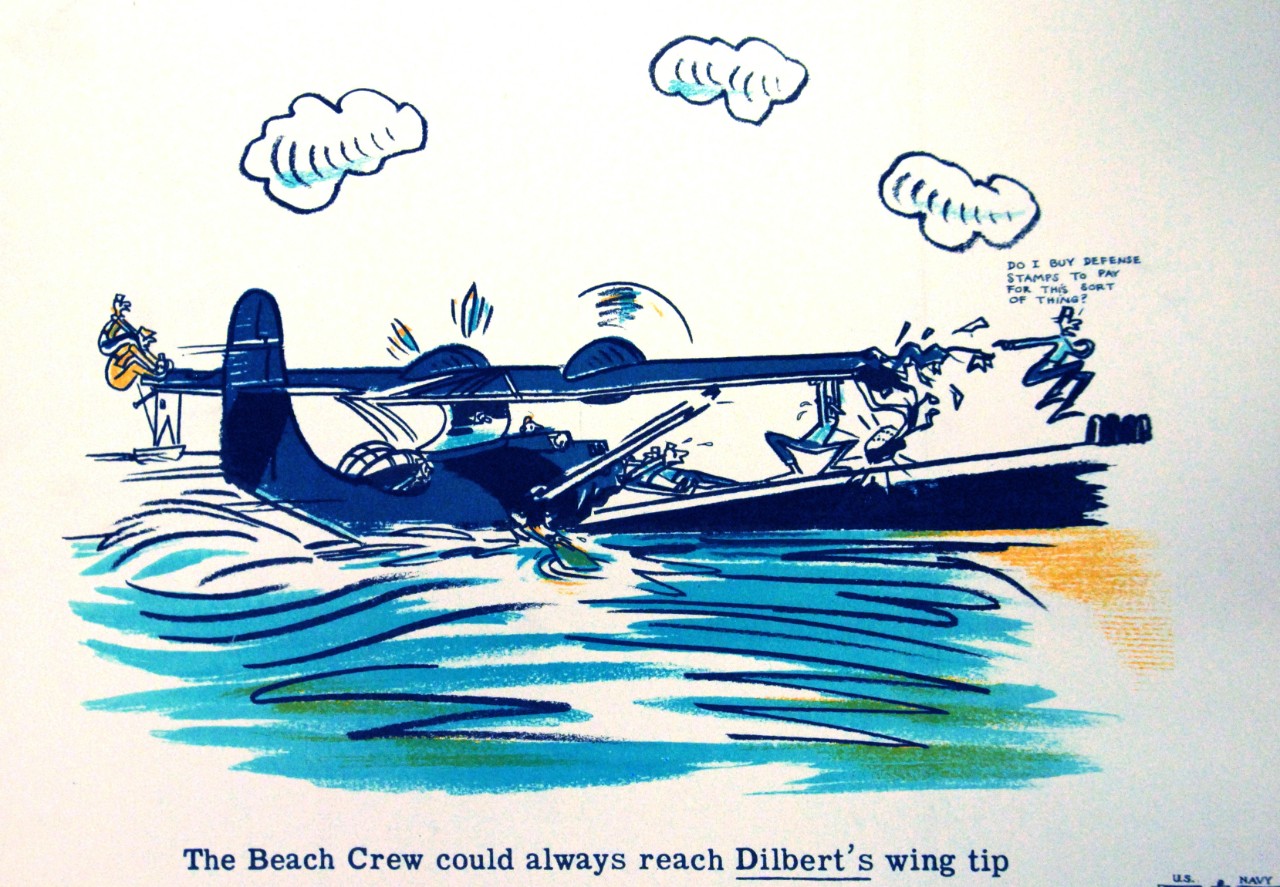
LC-Lot-8088-1: U.S. Naval Aviation Training Aids by U.S. Navy Training Division, circa 1943. Slide 240: “Dilbert had never understood why you stayed in your own area.” Artwork by Lieutenant Commander Robert C. Osborn, USNR. Courtesy of the Library of Congress.
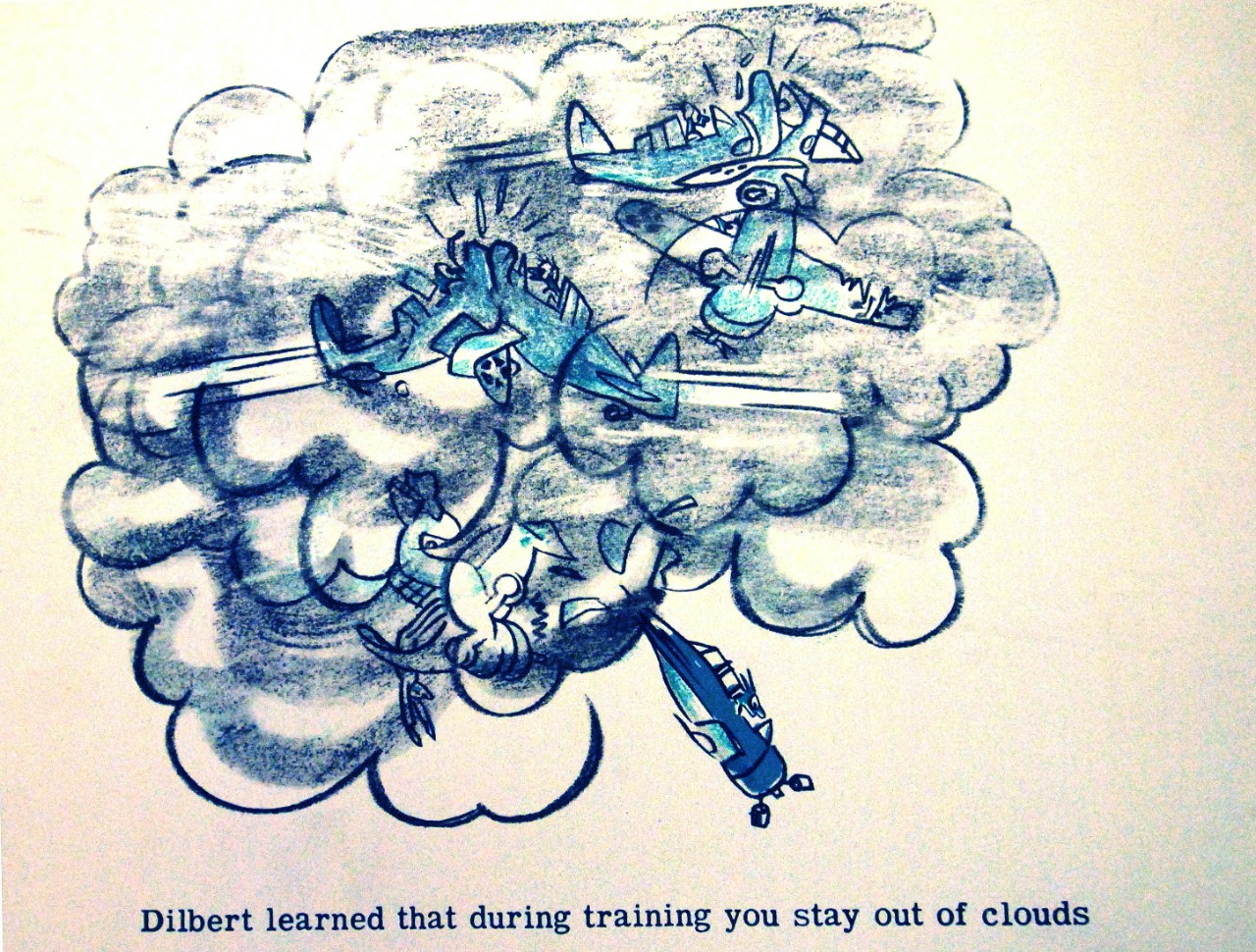
LC-Lot 8088-5: U.S. Naval Aviation Training Aids by U.S. Navy Training Division, circa 1943. Slide 246: “Dilbert learned that during training you stay out of the clouds.” Artwork by Lieutenant Commander Robert C. Osborn, USNR. Courtesy of the Library of Congress.
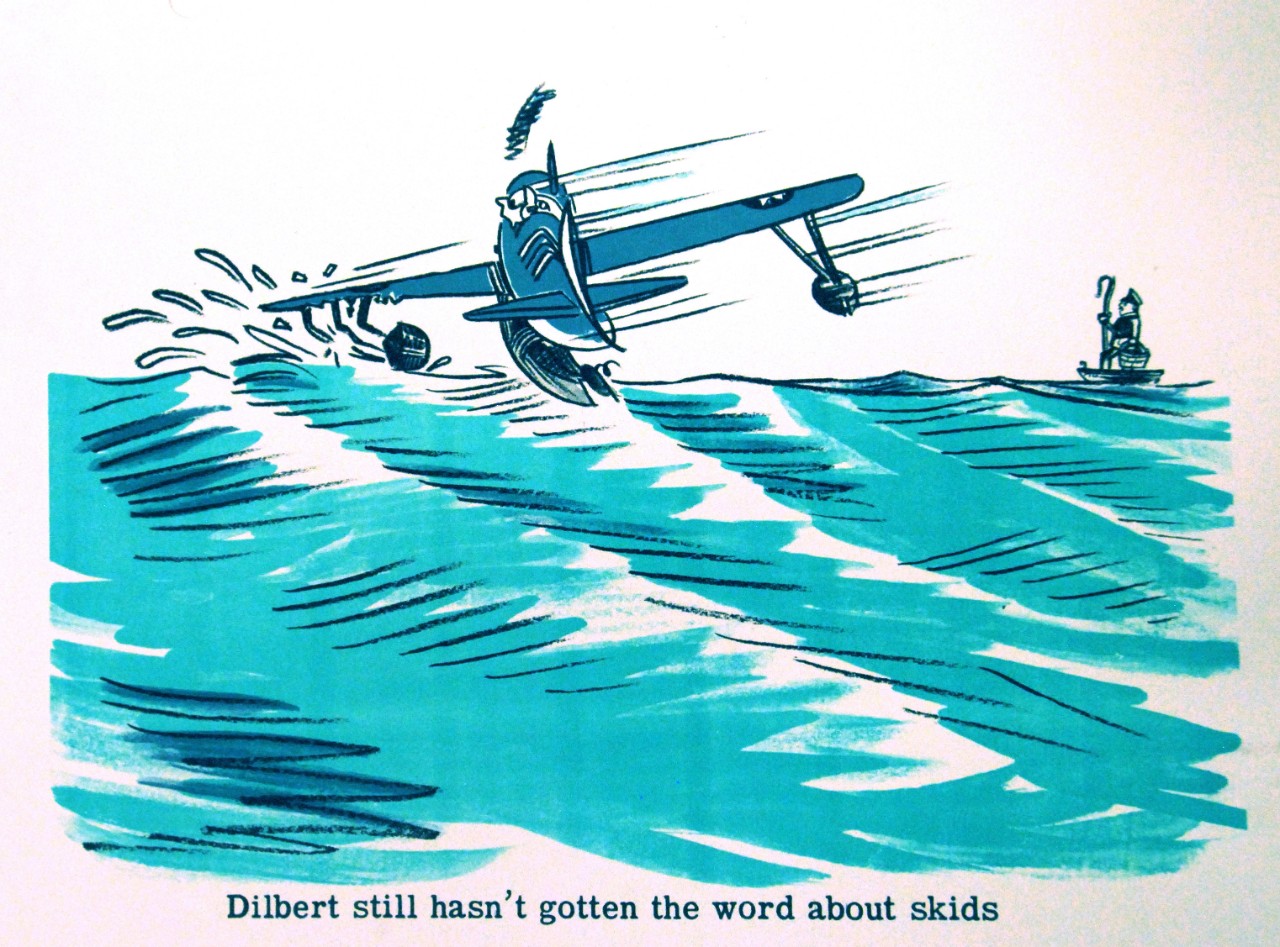
LC-Lot-8088-8: U.S. Naval Aviation Training Aids by U.S. Navy Training Division, circa 1943. Slide 250: “Dilbert still hasn’t gotten the word about skids.” Artwork by Lieutenant Commander Robert C. Osborn, USNR. Courtesy of the Library of Congress.
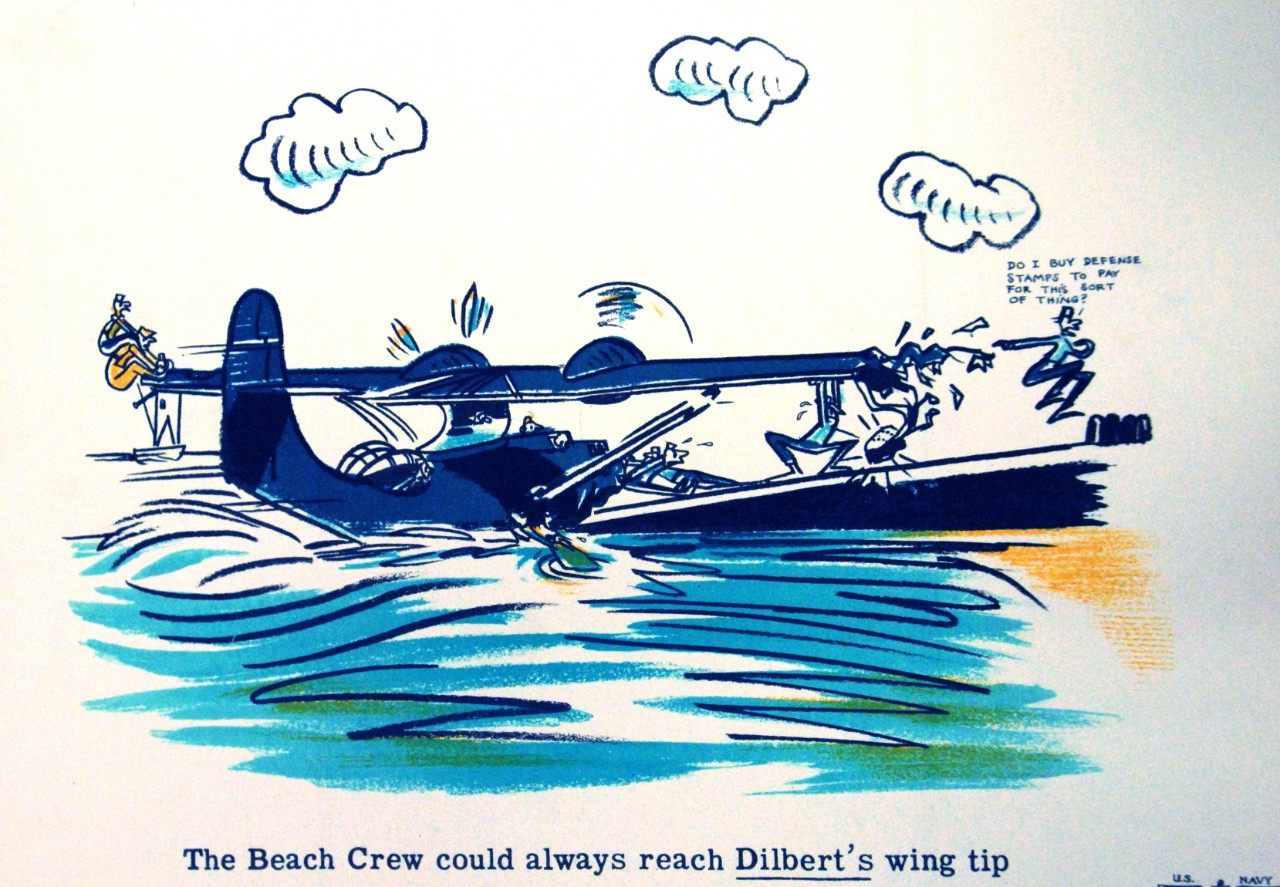
LC-Lot 8088-11: U.S. Naval Aviation Training Aids by U.S. Navy Training Division, circa 1943. Slide 254: “The Beach Crew could always reach Dilbert’s wing tip.” Note the PBY “Catalina” aircraft. Artwork by Lieutenant Commander Robert C. Osborn, USNR. Courtesy of the Library of Congress.
Grampaw Pettibone:
In 1943, Robert Osborn teamed up with Captain Seth Warner, USN, to create Grampaw Pettibone. Grampaw was revered curmudgeon who was the foe of all the Dilberts in naval aviation training. He was the oldest naval aviator and the sentinel of naval aviation safety. He is a “cantankerous old codger with a hair-trigger temper and a low boiling point.” Nothing makes him angrier than a pilot who does not pay attention and breaks the rules of flying. Other writers besides Warner have written Grampaw, but Osborn drew him. Warner died on January 17, 1967.
Jumpin’ Jehoshapat!, Robert Osborn, Ace Cartoonist. A Self-Guide and Activities Booklet. National Museum of the U.S. Navy Curator Archives Collection.
To download the pamphlet, click on the image above.
Jumpin’ Jehoshapat!, Robert Osborn, Ace Cartoonist. Excerpts from Sense books, compiled by the Navy Museum to accompany the exhibition. National Museum of the U.S. Navy Curator Archives Collection.
To download the pamphlet, click on the image above.


